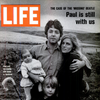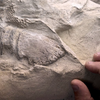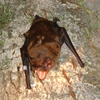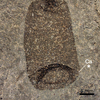Learn how Scientists Used Zircon Crystals to Date a Meteorite Impact!

The Bay of Stoer, home to a billion year old meteorite impact
Post Author- Ellis Nolan
In a new study, researchers have observed that a meteorite impact in modern-day Scotland, thought to have occurred 1.2 billion years ago, was actually much more recent, at around 990 million years ago. Their method: studying the microscopic zircon crystals that they say “captured the impact.”
The site of this discovery is known as the Stac Fada Member, a layer of the Bay of Stoer geological formation in Northern Scotland. The member is of particular interest to scientists as it is thought to be illustrative of how meteorite impacts influenced the development of early land-dwelling lifeforms on Earth. Normally, it’s quite difficult to date meteorite impacts since the movement of Earth’s tectonic plates often distorts and displaces geological evidence. However, in the case of the Bay of Stoer Formation, the presence of the mineral Zircon gave scientists a much smaller range for when the meteorite impact actually occurred.
A large zircon crystal
Previous studies have found that when Zircon is subjected to extremely high pressures, more than 20 gigapascals, to be exact, it turns into Reidite, an extremely rare mineral. For context, it takes about five gigapascals of pressure to turn carbon into diamonds. Scientists can then analyze these impacted crystals, known as “shocked zircon,” and return a more precise impact timeframe. Through these new methods, the researchers determined the meteorite impacted the Earth’s surface about 200 million years later than previously thought.
Another point of interest about this revision of scientists’ understanding of the Stoer formation is that it puts the time of the meteorite impact alongside some of the first freshwater eukaryotes ever discovered. These organisms were the predecessors of all land-dwelling life on Earth, and this new discovery presents new questions about the impacts’ effect on their evolution.
Want to learn more? Check out our Zircon specimens here, and our earliest life collection here!
Featured Product
Joe Frazier Boxing Glove
Cool Things!

Is “Paul is Dead” Dead?: Unpacking One Of Pop Culture’s Most Enduring Conspiracy Theories

Scientists Discover Hooves and Skin in Preserved Dinosaur "Mummies!"
A dinosaur discovery just in time for Halloween! In a new analysis of a group of fossils from Wyoming, Scientists have determined this group of fossils are dinosaur “mummies,” with preserved skin and even hooves.

Scientists Record a Bat Catching Birds Mid-Flight!
Bats, birds, screeches, oh my! In a reverse-Hitchcock twist, a new study reveals that a species of European bat catches and eats birds mid-flight.
Specimen Deep Dives

The House that Ruth Built: The Story of the Old Yankee Stadium

The Queen of the Skies: the Story of the Boeing 747

Old Ironsides: The USS Constitution and the Start of the U.S. Navy
Long Form Articles

The Artist Behind the Macintosh: Susan Kare and Apple Computers
While the two Steves, Jobs and Wozniak, are the most well known faces behind Apple computers, equally important to the products and culture of the company were those who crafted the experience of using their computers through design. The most notable of these visual architects was Susan Kare, a designer responsible for “humanizing” Macintosh computers.

Can I Lick It? Yes You Can!
Have you ever been unable to tell if a fossil was really a fossil, but you were too embarrassed to admit it? Have you ever wanted to lick a fossil just because, but you didn’t want to risk judgment from your peers? Well, good news! You can kill two birds with one stone! Licking a fossil can actually help you determine if it’s the real deal or just another rock.

Is It Legal To Own a Meteorite: How to Start Your Outer Space Collection!
Meteorites are some of the rarest geological specimens to be found on Earth. Of course, since these stones are not of our world, purchasing them can sometimes be a confusing process. Is it legal to own a meteorite? In short, yes! Read on for help starting your cosmic collection!


















